|
NOTTINGHAMSHIRE BADGER GROUP
|
| Homes and Habitat - Badger Setts |
|
Badgers live in a sett which can be quite an extensive system of permanent burrows with many entrances and may be hundreds of years old. Badgers are very organised creatures and within the sett separate chambers will be used for living, sleeping and for giving birth and rearing cubs.
Badgers collect bedding such as dry grass and ferns which they change at regular intervals. Discarded bedding is removed from the sett which is always kept clean and tidy. There are different types of sett; main, annex and outlier. Main setts are the breeding centre of the clan and have several entrances. Some of the entrances may be disused but the majority will be well used with large spoil heaps outside and well worn paths leading to and from them. Because of the natural digging instincts of badgers, setts are frequently modified and extended even without an increase in the number of badgers. Usually there is only one main sett per clan. 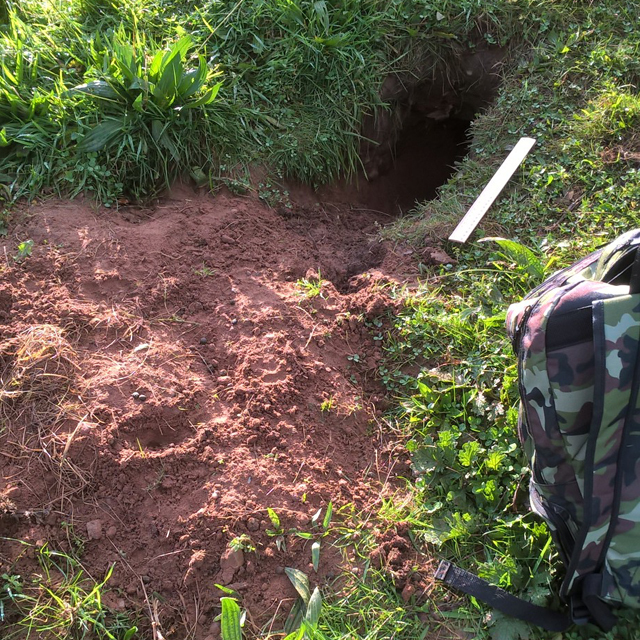 Typically an active sett entrance has freshly dug out soil leading from it. Footprints are often visible as are traces of bedding material.
Annexe setts are less extensive than the main sett and can be some 50 to 150 yards away from it and linked by paths. Again spoil heaps may be present but these setts are not always in constant use. They are often used as clan numbers increase or if clan members are temporarily driven away from the main sett when cubs are being born.
Outlier setts are even further from the main sett and are not connected to the main or annexe setts by obvious paths. They are much smaller and may only have a single entrance hole. They may not be in regular use but are used if a badger is on an extensive foraging trip. It may spend the day there resting before returning to the main sett later. By varying the use and occupancy of chambers and setts at different times of the year, the badger is able to restrict the build-up of parasites, as does the regular changing of bedding. 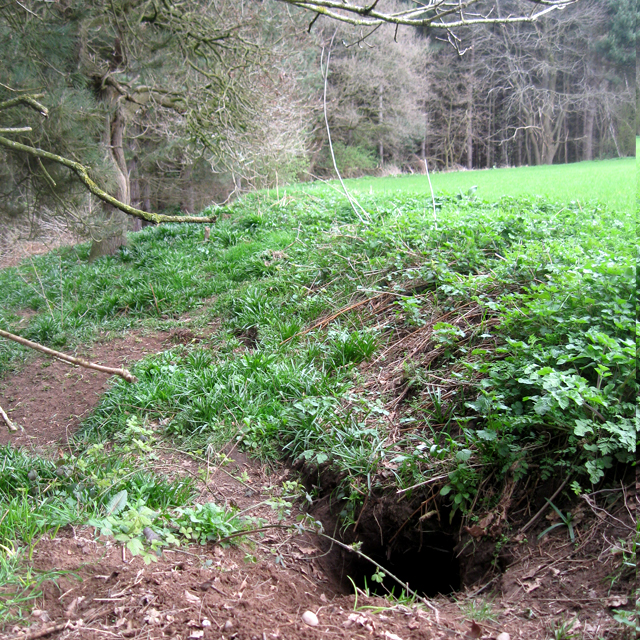 An annexe sett connected to the main sett by a long well worn pathway. |
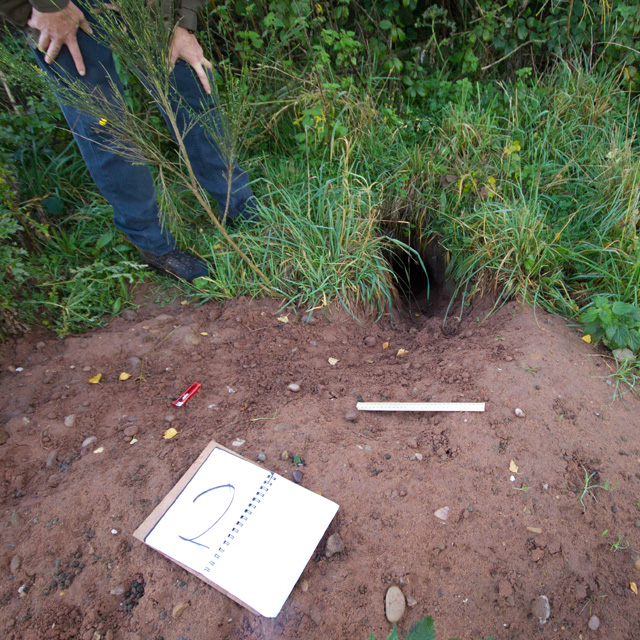 Photo: Nottinghamshire Badger Group photograph and record setts, monitoring any changes to sett activity
The choice of site is usually governed by how easily the ground may be excavated and the availability of food and water.
Badgers tend to choose sloping and well drained land ideally having some cover such as woodland or scrub, located near to open pasture for foraging. Badgers usually deposit dung in specially excavated shallow pits in latrine areas which may be some way from the sett. These also serve to mark their territory and define it from neighbouring colonies. Photo: Badger latrine. 
 Photo: An ILLEGALLY filled in badger sett. See the section on badgers and the law.  Photo: Badger sett entrance in an old graveyard. |
 Photo: A badger path leading under old railings. 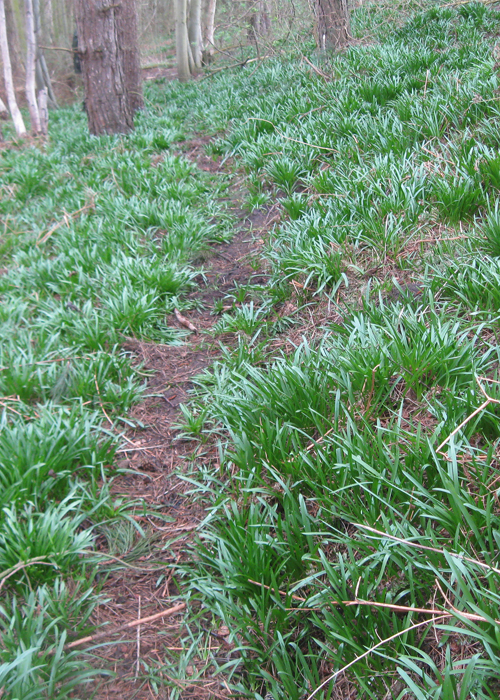 Photo: A badger highway. 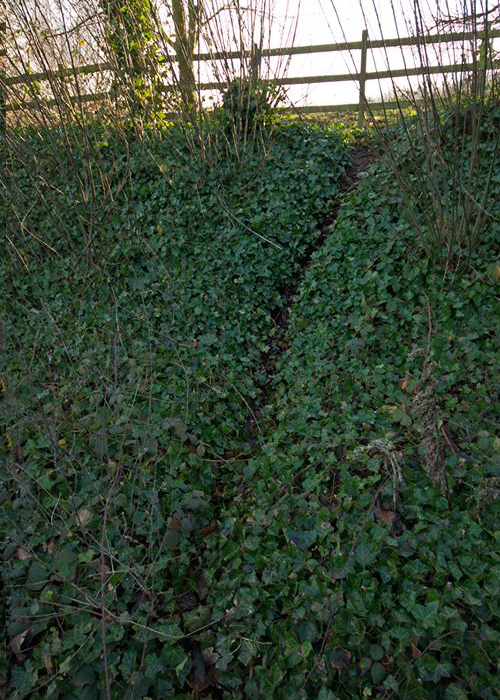 Photo: Badger 'slide' leading down from a sett entrance at the top of the slope.  A well worn badger path. |